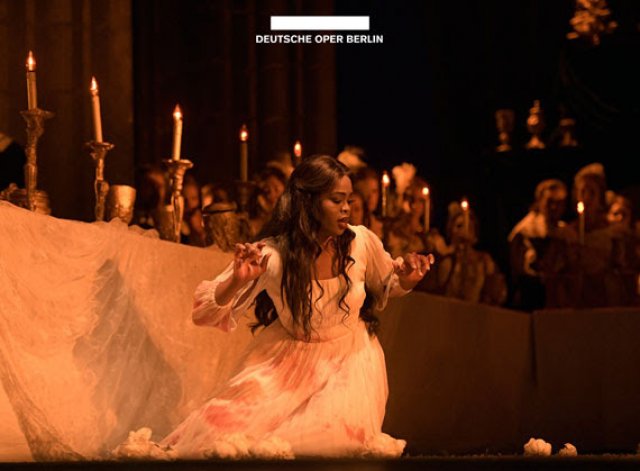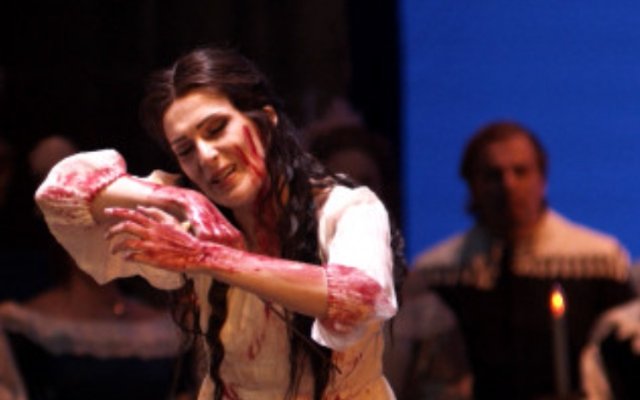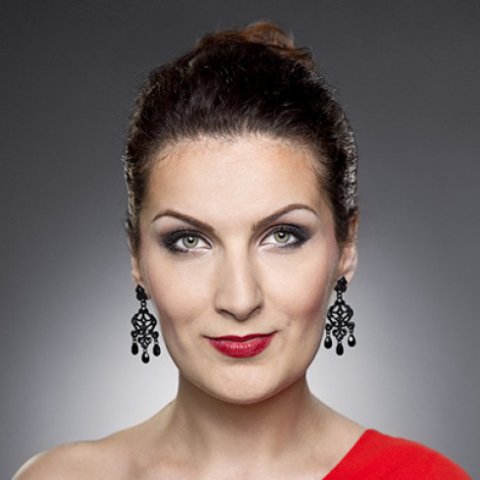Lucia di Lammermoor at Deutsch Opera
One of Three Choices
By: Patrick Lynch - Jun 08, 2023
If you were in Berlin on June 7th, 2023, you too may have struggled with deciding which of the opera performances being offered that night you would attend as there were at least three to choose from: Thomas’ Hamlet at Komische Oper, Wagner’s Der Fliegende Holländer at Staatsoper Unter den Linden, or, as I chose, Donizetti’s Lucia di Lammermoor at Deutsche Oper Berlin. This was my first time attending opera in Germany, and also my 58th birthday, so I hoped to gauge my appreciation for Berlin’s offerings and celebrate my anniversaire by choosing an opera I know very well.
Deutsche Oper Berlin is a sombre looking edifice from the outside; it is no Staatsoper. Approaching it from the Siegessäule, or Victory Column, at Große Stern, down the broad boulevard Strasse des 17 Juni, passing through the lush Große Tiergarten, one might expect something imperial, or majestic at least, at the end of the road. But no, the building is a monolith from the early 1960s designed by Fritz Bornemann; a dreary and unassuming structure, it resembles a large high school, built out of functional necessity with cost effectiveness in mind. Nevertheless, what it lacks in exterior ornamentation it makes up for with an interior expansiveness––one could easily imagine a large student rally taking place in the Parkett lobby– –and is surprisingly cheery. The entire configuration provides a perfect prologue to this produciton of Lucia.
Inside the theater, a space of about 2000 seats, a plain, bold red proscenium curtain suspends the incoming audience’s imagination from anticipating anything they are about to see. Once the overture begins, however––those ominous beats of the drums and haunting tones of the horns––the curtain pulls back to reveal yet another curtain, a trompe l’oeil design of rich velvet held in place by ornate tiebacks. Instantly, this newly revealed layer transports us back in time to a theater from another era, when candlelight created the shadowy contexts in which tragedies like Lucia are best played out, and our appreciation for the Gothic––its trappings of terror and horror––can be savored and enjoyed.
The effect is further enhanced by the presence of a female spectral, ghostly white, practically transparent, placed at the center of the scene on this scrim curtain. She seems to be wandering, looking for something with her outstretched hand. One can’t help but call to mind the claim Lucia makes to her maid Alisa about having seen the ghost of a young woman murdered by a Ravenswood ancestor, as she does in her famous act one aria, “Regnava nel silenzio” or Lucia’s own words during her mad scene, “il fantasma, il fantasma” from the act three aria, “Il dolce suono”. We are in the Gothic world of the Scottish highlands now and it is deligthfully ghostly. Like giddy teenagers soaking up horror for the sake of effect, we allow the music and drama to wash over us, easily dismissing any production flaws.
It is this quality, this high school “let’s put on a show” energy that makes this production of Lucia so charming. This is no Metropolitan Opera or Covent Garden showstopper, there is no grand staircase for Lucia to descend and the cathedral-like columns look like they are cut out of cardboard, but the overall effect is that these kids really wanted to do their best! What emerges is great singing and we get plenty of that, all the singers were great. But, the most charming element of all, is that soprano Adela Zaharia, towers over all the men; ALL of them: Enrico, Edgardo, Arturo and even Raimondo! Like real life, where girls grow up faster than boys because, well, they have to––how old is Lucia anyway? 15?––the sight of seeing the tall soprano looking down upon her colleague’s characters enhances the absurdity of what women have had to deal with for centuries: small-minded men trying to control women’s bodies.
The production was enchanting and moving too.



